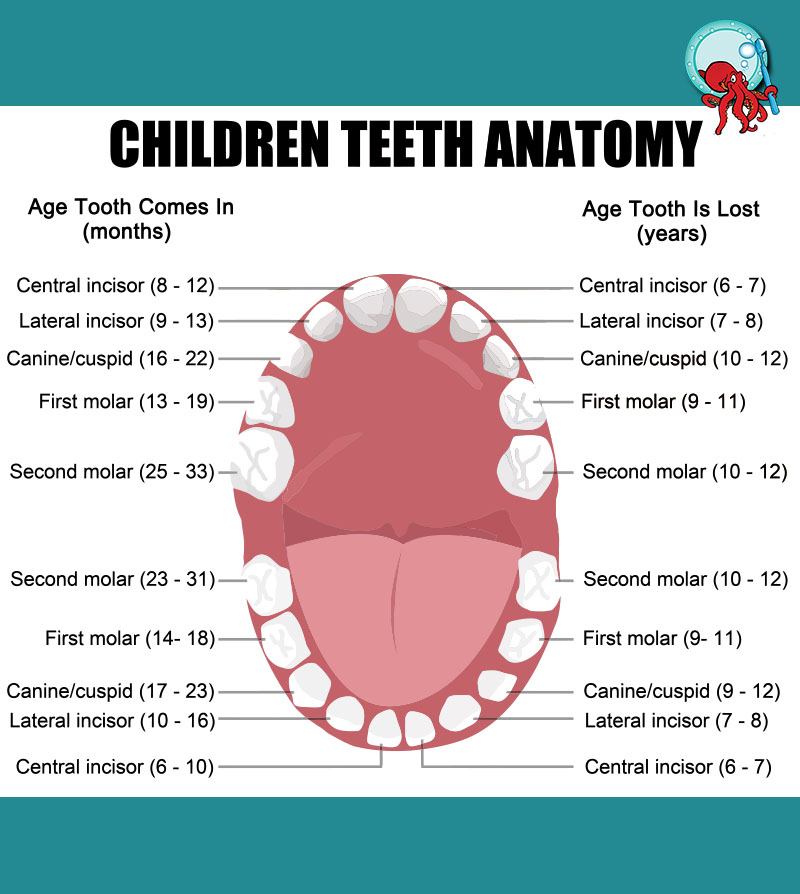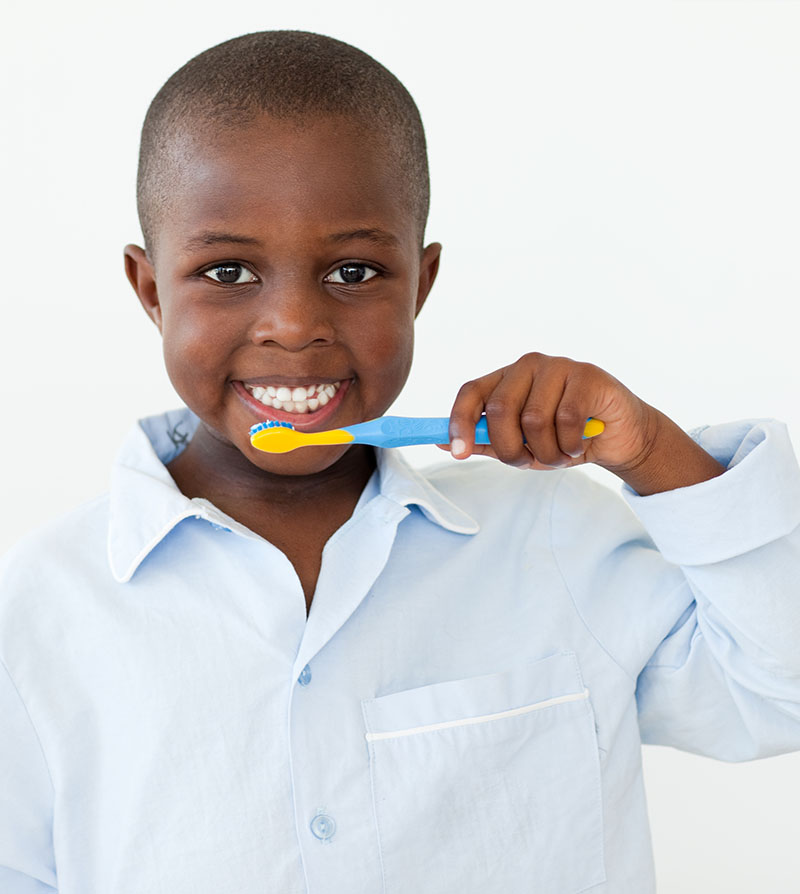
PEDIATRIC DENTISTRY
Dental Topics
Learn more about common topics of interest. Click on a specific topic to the right or scroll down to view all.



Tooth Eruption
Throughout your life, you will have two sets of teeth: primary (baby) teeth and secondary (permanent) teeth. The primary teeth appear around ages 6-8 months, and all 20 are in place by age 3.
Permanent teeth will begin to grow around age 6, and with the exception of wisdom teeth, are all present between ages 12 and 14. The next teeth to grow in are the 12-year molars and finally the wisdom teeth. Wisdom teeth typically begin breaking through from age 17 and on. The total number of permanent teeth is 32, though few people have room for all 32 teeth, which is why wisdom teeth are usually removed.
Your front teeth are called incisors. The sharp “fang-like” teeth are canines. The next side teeth are referred to as pre-molars or bicuspids, and the back teeth are molars. Your permanent teeth are the ones you keep for life, so it is important that they are brushed and flossed regularly and that periodic check-ups by a dentist are followed.

Tooth Brushing and Flossing
Brushing
Use a toothbrush with soft bristles and a small strip of fluoride toothpaste. When you brush your teeth, move the brush in small circular motions to reach food particles that may be under your gum line. Hold the toothbrush at an angle and brush slowly and carefully, covering all areas between teeth and the surface of each tooth. It will take you several minutes to thoroughly brush your teeth. Brush up on the lower teeth, down on the upper teeth, and the outside, inside, and chewing surface of your front and back teeth. Brush your tongue and the roof of your mouth before you rinse.
Brush your teeth four times daily to avoid the accumulation of food particles and plaque:
- In the morning after breakfast
- After lunch or right after school
- After dinner
- At bedtime
As soon as the bristles start to wear down or fray, replace your toothbrush with a new one. Do not swallow any toothpaste; rinse your mouth thoroughly with water after you finish brushing. It is important to carefully floss and brush daily for optimal oral hygiene.

Flossing
For areas between the teeth that a toothbrush can’t reach, dental floss is used to remove food particles and plaque. Dental floss is a thin thread of waxed nylon that is used to reach below the gum line and clean between teeth. It is very important to floss between your teeth every day.
Pull a small length of floss from the dispenser.
Wrap the ends of the floss tightly around your middle fingers. Guide the floss between all teeth to the gum line, pulling out any food particles or plaque. Unwrap clean floss from around your fingers as you go, so that you have used the floss from beginning to end when you finish.
Floss behind all of your back teeth.
Floss at night to make sure your teeth are squeaky clean before you go to bed. When you first begin flossing, your gums may bleed a little. If the bleeding does not go away after the first few times, let a staff member know at your next appointment.

Thumb Sucking
Thumb and pacifier sucking habits will generally only become a problem if they go on for a very long period of time. Thumb or finger sucking are habits that occurs in infants. Children usually give up thumb-sucking by the age of four. If the child continues past the age when their permanent teeth start to erupt, they may develop crooked teeth and a malformed roof of their mouth. This results from the frequency, duration, intensity and position of the thumb in the child’s mouth. This can also effect the position of the upper and lower jaw and can also affect speech.
Most children stop these habits on their own, but if they are still sucking their thumbs or fingers when the permanent teeth arrive, a mouth appliance may be recommended by your pediatric dentist. Ask us about the book, “David Decides”, and a product called Mavala.
Breaking the Habit
- Wait till the time is right. (low stress)
- Motivate your child (show examples of what could happen to their teeth, and fingers/thumbs.)
- Use a reward system. (small incentives will encourage your child to stick with it!)

Cavity Prevention
Most of the time cavities are due to a diet high in sugary foods and a lack of brushing.
Limiting sugar intake and brushing regularly, of course, can help. The longer it takes your child to chew their food, the longer the residue stays on their teeth and the greater the chances of getting cavities.
Every time someone eats, an acid reaction occurs inside their mouth as the bacteria digests the sugars. This reaction lasts approximately 20 minutes. During this time the acid environment can destroy the tooth structure, eventually leading to cavities.
Consistency of a person’s saliva also makes a difference as thinner saliva breaks up and washes away food more quickly. When a person eats diets high in carbohydrates and sugars, they tend to have thicker saliva, which in turn produces more of the acid-producing bacteria that causes cavities.
Tips for Cavity Prevention
- Limit frequency of meals and snacks.
- Encourage brushing, flossing, and rinsing.
- Watch what you drink.
- Avoid sticky foods.
- Make treats part of meals.
- Choose nutritious snacks.

Sweet Facts and Healthy Snacks
Healthy Diet for Healthy Teeth
Your child needs a balanced diet for healthy teeth and gums. This includes snacks as well as meals. Trying to figure what kind of healthy snacks to provide? The snacking guidelines below should help you set the proper limits. Remember, it all starts with you!
Read more about healthy eating for children. Click below…
- Packing a Safe School Lunch
- Eat 5 a Day – The Color Way!
- 25 Healthy Snacks for Kids
- Raising Healthy Eaters

